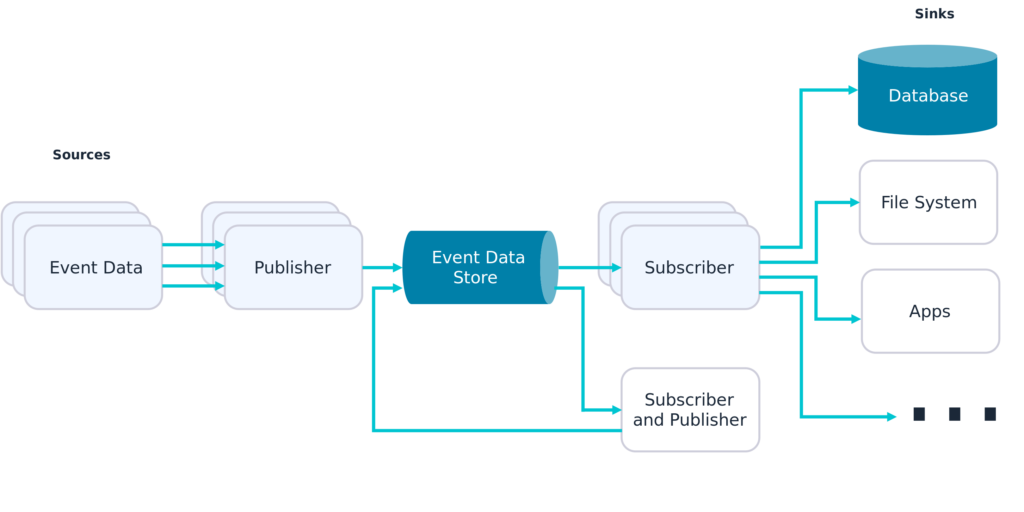Introduction
In today’s fast-paced digital world, businesses need scalable, efficient, and flexible systems to stay competitive. Microservices architecture has emerged as a popular solution to these challenges, allowing organizations to break down monolithic applications into smaller, manageable, and independently deployable services. However, designing microservices architecture can be complex, and that’s where microservices design patterns come into play. These patterns provide proven solutions to common design problems, making it easier to develop robust and efficient systems.
This article will delve into the world of microservices design patterns, exploring what they are, why they matter, and how they can be applied to create scalable and resilient systems. Whether you are a developer, an architect, or simply curious about modern software development practices, this guide will offer valuable insights into the best practices for designing microservices.
What Are Microservices?
Before we dive into design patterns, it’s essential to understand what microservices are. Microservices, or microservices architecture, is a style of software design where a large application is composed of small, loosely coupled, and independently deployable services. Each service is responsible for a specific piece of functionality and communicates with other services through well-defined APIs.
Key Characteristics of Microservices
- Independence: Each service operates independently, allowing teams to develop, deploy, and scale services without affecting the entire system.
- Decentralization: Unlike monolithic architectures, microservices decentralize data management, enabling services to manage their own databases.
- Resilience: Microservices enhance system resilience by isolating failures. If one service fails, the rest of the system can continue to function.
- Scalability: Individual services can be scaled independently based on demand, optimizing resource usage.
Why Design Patterns Matter in Microservices
Design patterns are essential in microservices architecture because they provide a set of best practices and solutions for common problems. These patterns help developers build more reliable, maintainable, and scalable systems. Without design patterns, developers might struggle with issues such as service communication, data management, and service orchestration.
Common Microservices Design Patterns
1. Decomposition Patterns
a. Service per Business Capability
This pattern involves designing each microservice around a specific business capability. For instance, in an e-commerce platform, separate services might handle user management, product catalog, and order processing. This approach ensures that each service is focused on a single aspect of the business, making it easier to manage and scale.
Example: In an online banking application, separate microservices could handle account management, transaction processing, and customer support.
b. Service per Team
In large organizations, it’s common to align microservices with development teams. Each team is responsible for a set of services, promoting ownership and accountability. This pattern encourages teams to build expertise in specific areas, leading to more efficient development and operations.
Example: A logistics company might have separate teams for inventory management, shipping, and delivery tracking, with each team developing and maintaining their respective services.
2. Communication Patterns
a. API Gateway
The API Gateway pattern acts as a single entry point for all client requests. It routes requests to the appropriate microservice, handles authentication, load balancing, and other cross-cutting concerns. This pattern simplifies client interactions and improves security by centralizing access control.
Example: An API Gateway in a travel booking system might handle requests for flight bookings, hotel reservations, and car rentals, directing each request to the relevant service.
b. Chained Microservice Pattern
In the chained microservice pattern, a request from a client triggers a sequence of service calls. Each service processes part of the request and passes it to the next service in the chain. This pattern is useful for workflows where each step depends on the previous one.
Example: In an online shopping system, placing an order might involve a chain of services: order validation, payment processing, inventory update, and shipping confirmation.
c. Event-Driven Pattern
The event-driven pattern relies on events to trigger actions across microservices. When a service changes state, it publishes an event, which other services can subscribe to and act upon. This pattern decouples services, making the system more flexible and scalable.
Example: In a social media platform, when a user posts an update, an event is published. Other services, such as notifications, news feed updates, and analytics, subscribe to this event and perform their respective actions.
3. Data Management Patterns
a. Database per Service
In microservices architecture, it’s common for each service to have its own database. This pattern isolates data management, allowing services to choose the best database technology for their needs and improving system resilience by preventing single points of failure.
Example: An online marketplace might use different databases for product listings, user profiles, and transaction histories, optimizing each service for its specific data requirements.
b. Shared Database
In some cases, microservices might share a database to ensure data consistency and reduce duplication. However, this pattern can introduce tight coupling and complicate scaling.
Example: A healthcare system might use a shared database for patient records, ensuring that all services have access to the latest information without the need for complex data synchronization.
c. CQRS (Command Query Responsibility Segregation)
CQRS separates the read and write operations of a service into different models. The command model handles write operations, while the query model handles read operations. This pattern improves performance and scalability by optimizing each model for its specific tasks.
Example: In a financial application, the command model might handle transactions and account updates, while the query model provides account summaries and transaction histories.
4. Deployment Patterns
a. Multiple Service Instances per Host
This pattern involves deploying multiple instances of a microservice on the same host. It’s useful for maximizing resource utilization and reducing deployment costs.
Example: A video streaming service might deploy multiple instances of its video encoding service on a single high-performance server to process more videos simultaneously.
b. Single Service Instance per Host
In this pattern, each service instance is deployed on a separate host. It provides better isolation and fault tolerance, as failures in one instance don’t affect others.
Example: A financial trading platform might deploy each instance of its trade processing service on a separate server to ensure high availability and reliability.
c. Service Instance per Container
Using containers like Docker, this pattern involves deploying each service instance in its own container. Containers provide lightweight, consistent environments, making it easier to manage and scale services.
Example: An e-commerce website might deploy each microservice (product catalog, user management, order processing) in its own Docker container, allowing for independent scaling and updates.
5. Observability Patterns
a. Log Aggregation
Log aggregation collects logs from all microservices into a centralized location for analysis and troubleshooting. This pattern simplifies monitoring and helps identify issues across the system.
Example: A centralized logging service in a healthcare application collects logs from all services, enabling developers to track down errors and performance issues.
b. Distributed Tracing
Distributed tracing tracks requests as they flow through multiple microservices, providing insights into performance and identifying bottlenecks. It helps developers understand the end-to-end journey of a request.
Example: In a ride-sharing app, distributed tracing might follow a user’s ride request from the app through driver matching, ride dispatch, and payment processing services.
c. Health Check API
A health check API allows services to report their status, enabling automated monitoring and alerting systems to detect and respond to failures. This pattern improves system reliability and uptime.
Example: An online banking system might implement health check APIs for its authentication, account management, and transaction services, ensuring that each service is functioning correctly.
Conclusion
Microservices design patterns are crucial for building scalable, resilient, and maintainable systems. By understanding and applying these patterns, developers can tackle common challenges in microservices architecture and create robust applications that meet the demands of modern businesses. From decomposition and communication to data management and observability, these patterns offer a comprehensive toolkit for designing effective microservices.
FAQs
What are microservices?
Microservices, or microservices architecture, is a style of software design where a large application is composed of small, loosely coupled, and independently deployable services. Each service is responsible for a specific piece of functionality and communicates with other services through well-defined APIs. This approach offers numerous benefits, including improved scalability, resilience, and ease of development.
Why are design patterns important in microservices architecture?
Design patterns are essential in microservices architecture because they provide a set of best practices and solutions for common problems. These patterns help developers build more reliable, maintainable, and scalable systems. Without design patterns, developers might struggle with issues such as service communication, data management, and service orchestration, leading to inefficient and brittle systems.
What is the API Gateway pattern?
The API Gateway pattern acts as a single entry point for all client requests. It routes requests to the appropriate microservice, handles authentication, load balancing, and other cross-cutting concerns. This pattern simplifies client interactions and improves security by centralizing access control. An example is an API Gateway in a travel booking system that handles requests for flight bookings, hotel reservations, and car rentals, directing each request to the relevant service.
What is the database per service pattern?
In the database per service pattern, each microservice has its own database. This pattern isolates data management, allowing services to choose the best database technology for their needs and improving system resilience by preventing single points of failure. For example, an online marketplace might use different databases for product listings, user profiles, and transaction histories, optimizing each service for its specific data requirements.
How does the event-driven pattern work in microservices?
The event-driven pattern relies on events to trigger actions across microservices. When a service changes state, it publishes an event, which other services can subscribe to and act upon. This pattern decouples services, making the system more flexible and scalable. For example, in a social media platform, when a user posts an update, an event is published. Other services, such as notifications, news feed updates, and analytics, subscribe to this event and perform their respective actions.
What are the benefits of using containers in microservices deployment?
Using containers in microservices deployment provides several benefits, including lightweight, consistent environments, improved resource utilization, and simplified scaling and management. Containers like Docker enable developers to deploy each service instance in its own container, ensuring consistent environments across different stages of development and production. This approach also allows for independent scaling and updates, improving the overall efficiency and flexibility of the system.
What is distributed tracing and why is it important?
Distributed tracing tracks requests as they flow through multiple microservices, providing insights into performance and identifying bottlenecks. It helps developers understand the end-to-end journey of a request, making it easier to diagnose issues and optimize performance. For example, in a ride-sharing app, distributed tracing might follow a user’s ride request from the app through driver matching, ride dispatch, and payment processing services, ensuring a smooth and efficient user experience.




